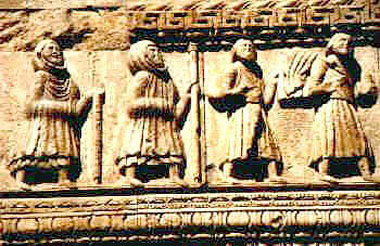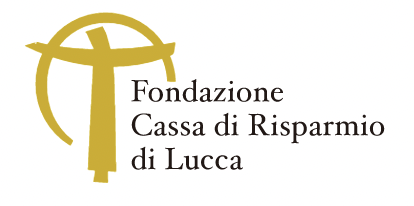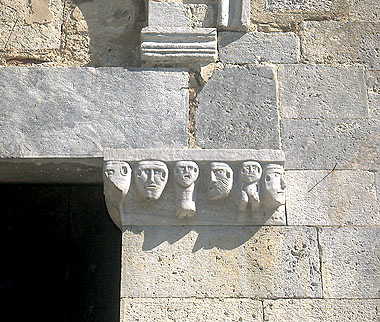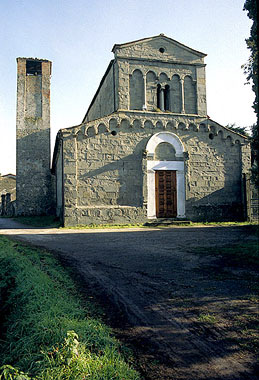
The Via Francigena developed in the course of centuries from the union of different portions of Roman roads in order to face the new political and military situation that arose in the VIth-VIIth centuries.
In the first half of the VIth century Italy was occupied by the Byzantines who fought the Ostrogoths to gain a hold in the Italian peninsula. The Lombard conquest, that began in 568, interrupted the Byzantine occupation. The advance of the Lombards in Byzantine territory was not uniform and assumed the form of successive southward thrusts starting from the northern strongholds, the capital of which was Pavia.
The Byzantines applied a defensive strategy building fortifications next to the crucial passages. So, many Apennine passes that connected Tuscany with the Po plain and had been used by the Roman roads were closed; none of the consular roads remained practicable for the whole way. Only the Cisa pass connected the Lombard capital Pavia with the Duchy of Tuscia and its capital Lucca. For this reason a secondary road connecting Lucca to Parma and already used in Roman times was opened up again; in the Early Middle Ages it was known as "via di Monte Bardone", a derivation from "Mons Longobardorum".
A number of royal abbeys ("badie regie") equipped with hospices and hospitals were opened along the Monte Bardone road. In time the road, created as a military road, became the main way of communication between Rome, the centre of Christianity, and the Po valley (and from there with central Europe). The Monte Bardone road was thenceforth known as "Via Romea" or "Via Francigena", from the places it linked. Famous people have travelled along this road, for example the archbishop of Canterbury Sigeric who, on his way back from Rome where he had received the pallium from Pope John XVth to his diocese in 994 A.D., stopped in no less than 120 places. This is the first mention of the Via Francigena in all its length.
The economic development during the XIth and XIIth centuries caused an increase in traffic along the Via Francigena that was equipped with new buildings. The number of hospices, such as the hospital of Altopascio, as well as the interest of feudal powers in controlling the road and its revenues, grew.
From Lucca the Via Francigena turned north towards Borgo a Mozzano; in the other direction it crossed present day Capannori, Porcari, Altopascio, continuing east towards Fucecchio. A portion also descended the Freddana valley to reach Camaiore.
Historians who have studied the Via Francigena prefer to speak of an "area of the road": indeed, it was not just a single road, but a bundle of roads with several branches that for territorial or even economic reasons left the main route to catch up with it at important junctions.







